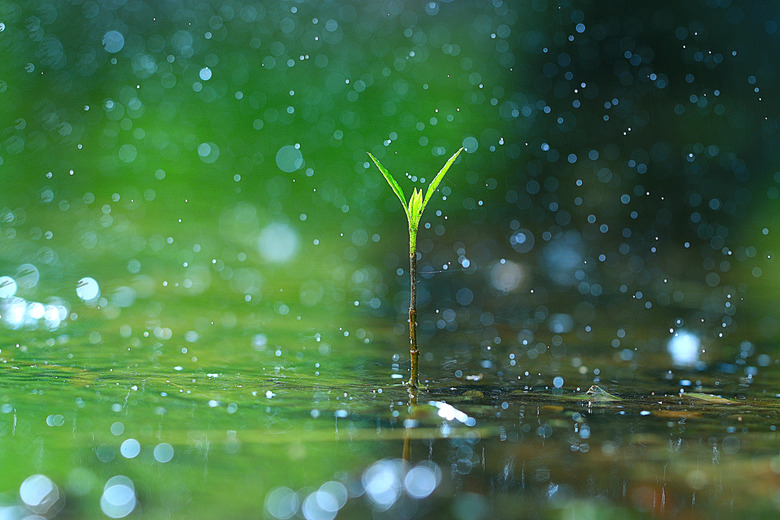The Rain's Importance To Life On Earth
Most of the Earth's surface is covered with water — and most of it is water we can't drink. 97 percent of Earth's water is salty sea water which is useless to most land-dwelling plants and animals. That's why rain and snow are crucial to life on Earth. Precipitation supports life on land with salt-free water.
Hydrologic Cycle
Hydrologic Cycle
Rain and snow are part of a larger process called the hydrologic cycle, which transports water from the ocean to land and back again. Solar radiation warms the ocean and drives evaporation, which leaves the ocean salt behind. The wind carries this moisture over the land, where it condenses to form clouds and falls back to the ground as precipitation. This precipitation in turn feeds lakes and streams that ultimately carry the water back to the sea. Only 0.001 percent of Earth's water is found in the atmosphere at any one time, but the atmosphere nonetheless serves as the conduit that transports water from the ocean to the mainland.
Aquatic Life
Aquatic Life
Aquatic organisms that live in fresh water, like trout and catfish in streams or aquatic plants in ponds, depend on precipitation. Without it, there would be nothing to refill the bodies of water they inhabit. That precipitation doesn't always have to take the form of rain, of course, because snow that accumulates on mountain slopes during the winter melts and feeds streams and rivers in the spring. Salt concentrations are important for many forms of life; most freshwater fish, for example, can't live in salt water and vice versa.
Life
Life
Precipitation supplies the water that terrestrial organisms need — either directly in the form of rain that falls on soil where plants grow, or indirectly in the form of lakes, streams and ponds where animals can drink. Animal and human cells are made up of 90 percent water, so without fresh water, most life could not exist. You can see the importance of rain to life on land if you look at environments like the Sahara Desert, which receives less than three inches of precipitation a year, compared to 33.3 inches in an average year in Chicago. Thanks to the scarcity of rain and snow in the Sahara, it has only sparse plant and animal life.
Groundwater
Groundwater
Some precipitation meets with another fate: it slowly seeps its way into the ground and penetrates porous rock layers to become groundwater. This groundwater also plays an important role for life both directly and indirectly. Spring water from underground aquifers supplies streams and ponds, and humans have used groundwater since time immemorial both for drinking and irrigating crops. Groundwater is especially important for life during droughts, because springs may be the only source of fresh water available during these times.
References
Cite This Article
MLA
Brennan, John. "The Rain's Importance To Life On Earth" sciencing.com, https://www.sciencing.com/rains-importance-life-earth-23021/. 9 March 2018.
APA
Brennan, John. (2018, March 9). The Rain's Importance To Life On Earth. sciencing.com. Retrieved from https://www.sciencing.com/rains-importance-life-earth-23021/
Chicago
Brennan, John. The Rain's Importance To Life On Earth last modified March 24, 2022. https://www.sciencing.com/rains-importance-life-earth-23021/
